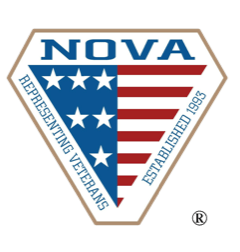Basic Eligibility Requirements for VA Benefits
Posted by Gregory M. Rada | June 22, 2021 | Disability Compensation, Health Benefits, State Veteran Benefits
Each VA benefit – health care, disability, pension, education, housing, etc. – administered by the VA has its own unique eligibility requirements but there are basic eligibility requirements common to all VA benefits. The most common requirement is whether you are a veteran, and some benefits look at whether you had wartime versus peacetime service or the length of your service.
Definition of a Veteran
The first and most important basic eligibility requirement is that you must be a veteran as defined by the VA. The VA defines a veteran as “a person who served in the active military, naval, or air service, and who was discharged or released therefrom under conditions other than dishonorable.”
Examples of “military, naval, or air service” are:
- Service in any of the five branches of the U.S. Armed Forces – Army, Air Force, Navy, Marine Corps, and Coast Guard
- Service as a member of the Reserve of any one of the five branches
- Service as a member of the Air or Army National Guard
- Service as a Cadet at the U.S. Military, Air Force, and Coast Guard Academies, or Midshipmen at the U.S. Naval Academy
- Attendance at a preparatory school for the Military, Air Force, and Naval Academies
In addition to military service, the service must have been “active.” Examples of active-duty service include:
- Full-time duty in the Army, Navy, Marine Corps, Air Force, or Coast Guard, other than “active duty for training”
- Service as a Cadet at the U.S. military, Air Force, or Coast Guard Academy, or as a Midshipman at the U.S. Naval Academy
- Attendance at the preparatory schools of the U.S. Military, Air Force, or Naval Academies
- Authorized travel to or from any of the above types of active duty
Active duty also includes “active duty for training.” Examples of active duty for training include:
- Full-time duty in the Armed Forces performed by Reservists, for training purposes
- Full-time duty performed by members of the National Guard if active for “federal purposes”
- Duty performed by members of a Senior Reserve Officers’ Training Corps (ROTC) when ordered to such duty for training or a practice cruise
- Attendance at the preparatory schools
- Authorized travel to and from any of the above types of active duty for training
The requirements for active duty can be confusing, especially for Reserve and Guard servicemembers.
Wartime versus Peacetime Service
The only time that wartime service arises as a basic eligibility requirement is for non-service-connected pension. To be eligible for a non-service-connected disability pension, the veteran must have served at least 90 consecutive days on active duty during a period of war. The veteran need not have engaged in combat – they simply need to have been on active duty for 90 days during a time of war.
The current periods of war are as follows:
- World War I: April 6, 1917, through November 11, 1918, or, for those who served in Russia, April 1, 1920. Service after November 11, 1918, and before July 2, 1921, qualifies as wartime service if the veteran had any active service from April 6, 1917, through November 11, 1918.
- World War II: December 7, 1941, through December 31, 1946, extended to July 25, 1947, if continuous with service on or before December 31, 1946.
- Korean Conflict: June 27, 1950, through January 31, 1955.
- Vietnam Era: August 5, 1964, through May 7, 1975. However, for veterans who served in the Republic of Vietnam, February 28, 1961, through May 7, 1975.
- Persian Gulf War: August 2, 1990, through a date to be prescribed by Presidential proclamation or law.
Yes, this means the United States has technically been at war via the Persian Gulf War since August 1990 to present time.
Experienced Veterans Benefits Attorneys
If you have been denied benefits, you need an attorney who will fight the VA for you. Contact After Service LLC online or call us at (844) 838-7529 to schedule your free initial consultation.








